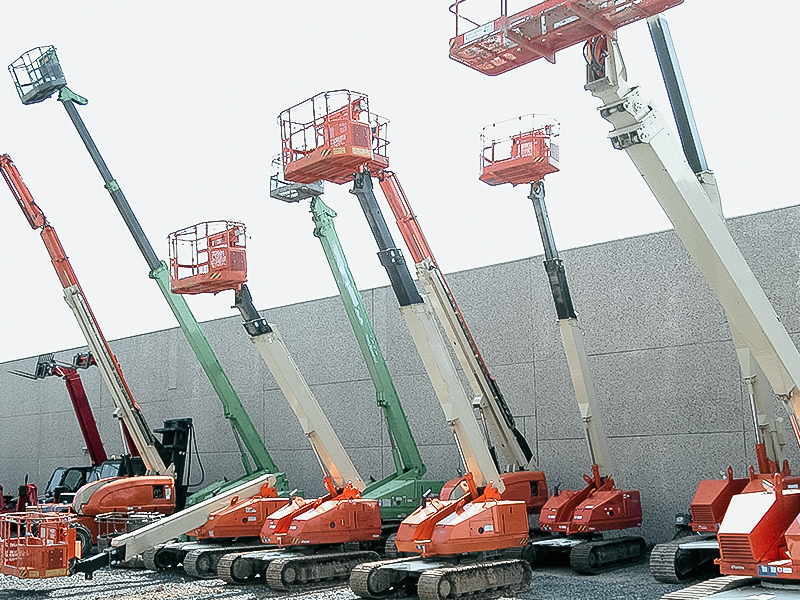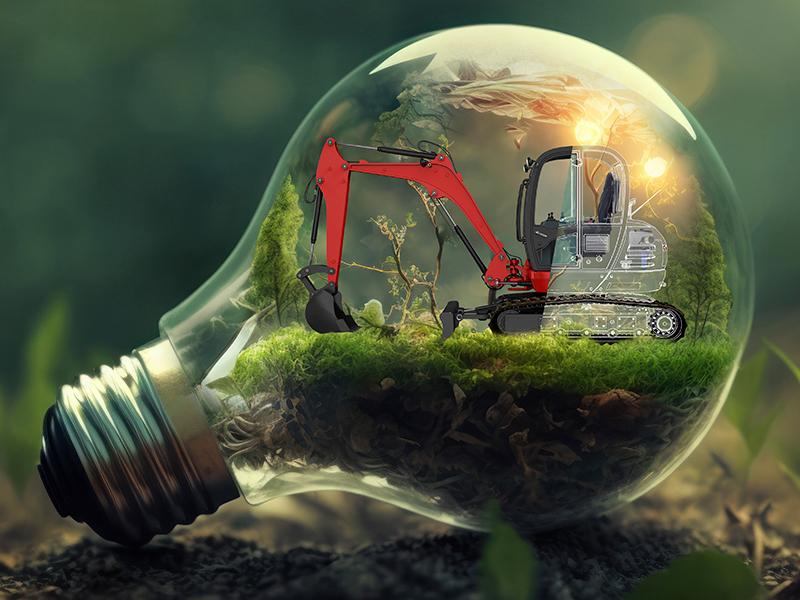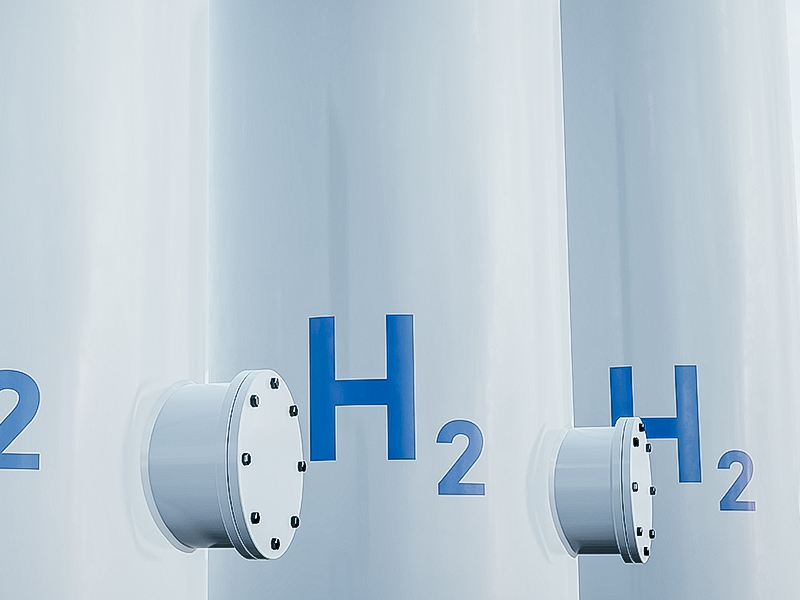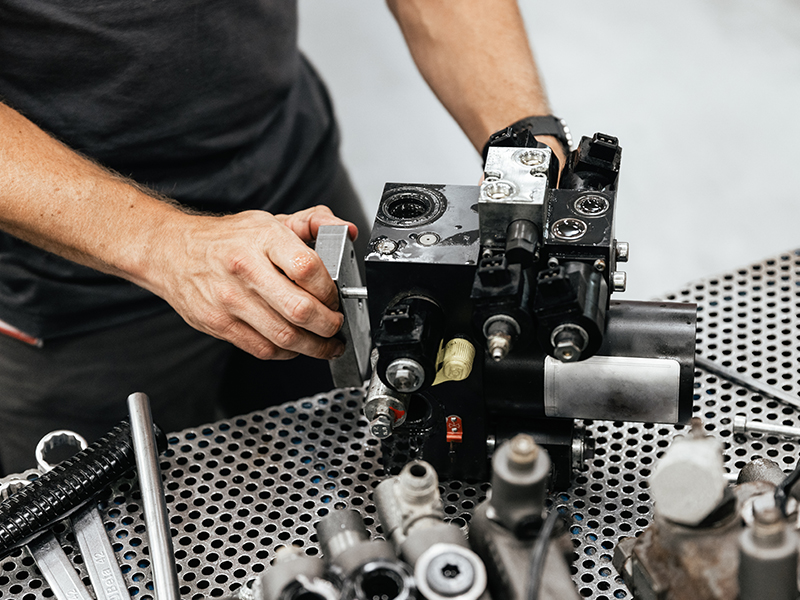Why construction equipment rental has become so popular

In recent years, there has been a significant increase in the rental of construction equipment. This increase is caused by various factors, with the need for a greener future as one of the most important ones. After all, it is the driving force behind the growing focus on sustainability and the energy transition, leading to a boom in low- and zero-emission machines. Of course, these trends have some implications for rental companies themselves. We talked about these implications with TVH Expert Sander De Loof.

About the expert
In his role as Key Account Manager for the EMEA region, Sander De Loof maintains and further develops the existing commercial relationships with key international customers. He is also responsible for commercial cooperation with international rental groups, which has made him an expert in the business model of rental companies. TVH can only be a valuable supplier to these companies if we understand how they work, what their needs are, and if we are aware of all developments and threats in the market.
The boom in rental

Why renting machines is popular
Construction equipment rental has always had its place in the economy, but its popularity has increased significantly in recent years. “This can be attributed to a number of factors,” Sander begins. “Firstly, there’s the impact of COVID-19. Not only did the pandemic cause supply chain issues, but it also led to exacerbated inflation and significant price increases. Economic uncertainties due to the current political situation have also contributed.”
“Secondly, the way we look at resources and consumables is changing. People are increasingly aware that these things are finite, leading to a surge of interest in concepts such as the circular economy and the sharing economy. Rental companies fit perfectly into this view because they have a circular business model: their equipment is shared by multiple users, which means that the use of the machines is also optimised.”
What does this mean for rental companies?
The increasing popularity of rental means that more and more machines sold today are destined for rental companies. In addition, the fleets of these rental companies are more diverse than in the past in terms of equipment types, makes and models. “To meet the needs of their customers, many rental companies focused on the construction market have small earth-movers, mobile elevating work platforms (MEWPs) and telehandlers in their fleets. And while the machines in these fleets may have been limited to a handful of makes in the past, this is no longer feasible,” Sander elaborates.
“Therefore, in the event of a machine breakdown, rental companies need a reliable supply of parts suitable for many makes and models. TVH has adapted to this by having acquired more than 7 million known references for all major construction equipment makes, such as Bobcat, Caterpillar, Genie, Haulotte, JCB, JLG, Kubota, Manitou, Merlo, Skyjack, Yanmar … In addition, we have several partnerships with makes and brands. For example, we recently became an official distributor of Sinoboom MEWP parts.”
Energy transition

Next to the general growth in construction equipment rental, there are other notable trends. The first is the energy transition, largely driven by changing legislation. Targets are being set all around the world to reduce emissions and mitigate the effects of global warming. The European Green Deal, for example, aims to make Europe the first climate-neutral continent by 2050. Legislation like this also has an impact on construction equipment.
Sander explains: “Logically, stricter rules for indoor use of machines have been in place for some time already. However, similar regulations are increasingly being extended to cities and outdoor use of equipment in general. To comply with these regulations, rental companies need to switch to low- or zero-emission equipment.”
“It is important to note that the energy transition is also playing a role in the growing popularity of rental. To comply with stringent legislation, many construction companies are opting to rent low- or zero-emission equipment rather than buy it themselves.”
Electrification
“Rental companies are making the energy transition mainly through investment in electric construction equipment for their fleets,” Sander continues. “This is also in line with the general market trend of an increasing share of electric machines. As a mobile elevating work platform is generally more likely to be used indoors, the level of electrification of these machines is already quite advanced. Today, about 50% of all MEWPs in use are electric. For other construction equipment, such as small earth-movers and telehandlers, the percentage is slightly lower. Nevertheless, these machines are catching up and it is predicted that by 2030, 30% of all machines produced will be electric.”
“At TVH, we are of course attentive to the development towards electric equipment. Our Electronics Department is rapidly expanding, in part to ensure we’re ready to supply parts for the electric future.”

Or something else?
When it comes to the energy transition, it is impossible to predict with 100% certainty what the greener future will look like. Electrification is one of the options, but there are also other alternatives. One of the possibilities is hydrogen, were it not for the fact that there are still few machines that run on this fuel and that the refuelling infrastructure is slow to take off.
Even if electrification turns out to be the way forward, it’s unsure whether the lithium-ion battery will be at the centre of this progress. After all, this type of battery still has some significant drawbacks, making it a less-than-ideal solution in the long term. That’s why the Solid State Battery is eagerly awaited. This type is safer than lithium-ion, has a higher energy density, charges faster … Unfortunately, Solid State Batteries are still too expensive and are not ready to be used at this moment.
“But whatever the future may hold, TVH will always keep a close watch on the market,” Sander reassures. “As we speak, we are continuously adapting where needed, to make sure our parts range is ready for the greener future. For example, Battery Supplies was recently integrated into TVH to ensure we have an extensive range of batteries that perfectly meets the needs of rental companies. You can read all about it in our ‘Batteries’ brochure.”
Sustainability

“It’s not just renters who are embracing the circular economy and who are concerned with sustainability. After all, it goes without saying that rental companies take special care of the machines in their fleets to ensure that they can be used for a long time,” Sander knows. “This has also led to an increase in the number of second-hand machines. When rental companies renew part of their fleet, the old equipment is not carelessly disposed of. As the machines are usually still in good condition, they can be seamlessly sold to another rental company.”
For machines with many years on the clock, it can sometimes be difficult to find suitable parts. When a new part is no longer available, TVH will still try to help you with our extensive range of remanufactured parts.
Interested in ordering?
Looking for parts and accessories to keep construction machines going? Check out our full range, or browse and buy new and remanufactured parts in our online shop.
Please feel free to contact us if you have any other questions. Our experts are happy to help if you need assistance in finding the correct parts. And if we don’t have a particular part yet, our extensive look-up service will investigate how we can help you.
About the authors
This blog post is brought to you by your construction equipment marketing team.